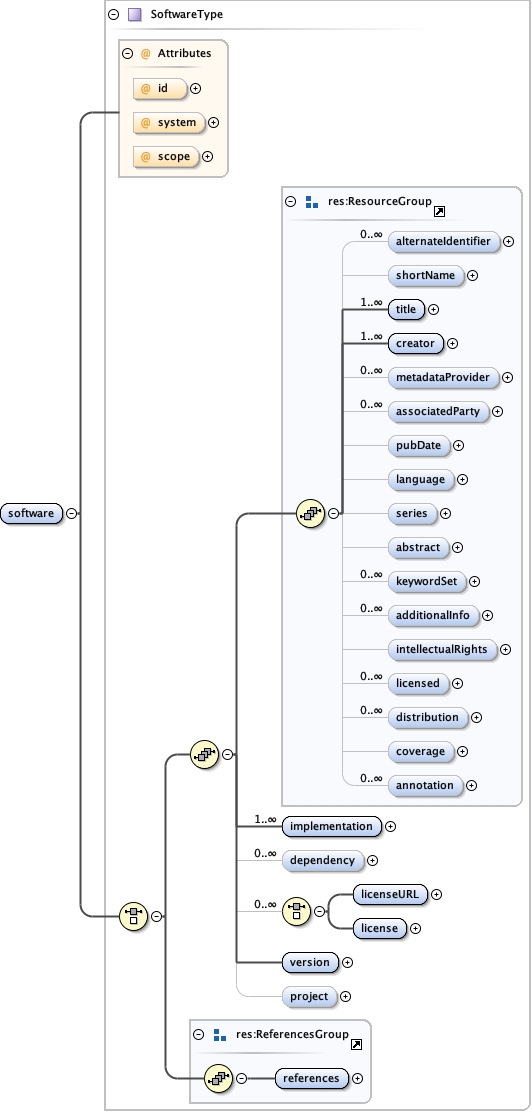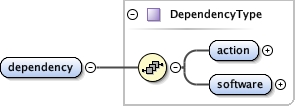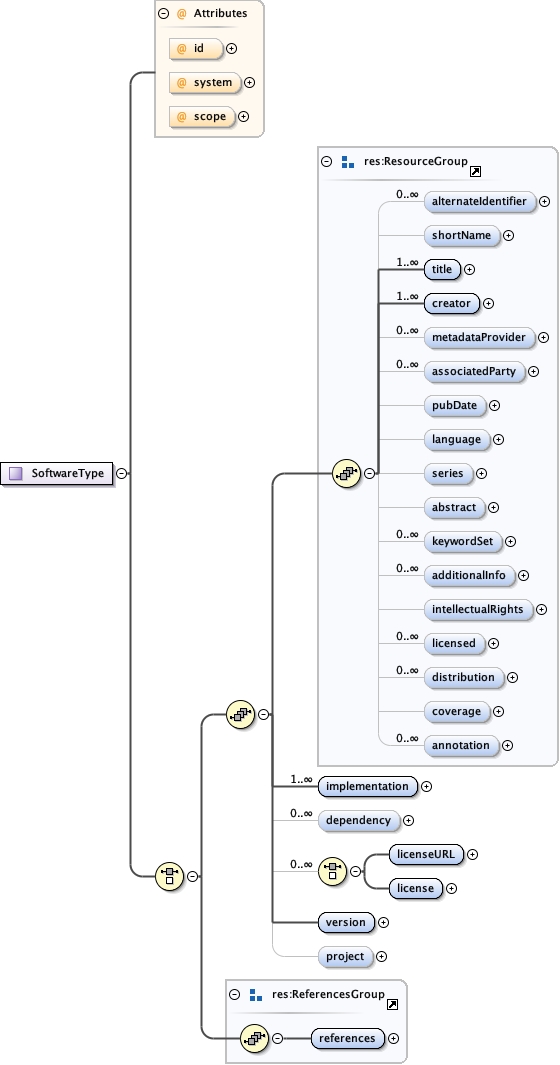| Namespace | eml://ecoinformatics.org/software-2.2.0 | ||
|
Annotations
|
|
||
|
Diagram
|
 |
||
| Type | SoftwareType | ||
|
Properties
|
|
||
| Model |
(alternateIdentifier* , shortName{0,1} , title+ , creator+ , metadataProvider* , associatedParty* , pubDate{0,1} , language{0,1} , series{0,1} , abstract{0,1} , keywordSet* , additionalInfo* , intellectualRights{0,1} , licensed* , distribution* , coverage{0,1} , annotation* , implementation+ , dependency* , (licenseURL | license) , version , project{0,1}) | (references)
|
||
| Children | abstract, additionalInfo, alternateIdentifier, annotation, associatedParty, coverage, creator, dependency, distribution, implementation, intellectualRights, keywordSet, language, license, licenseURL, licensed, metadataProvider, project, pubDate, references, series, shortName, title, version | ||
|
Instance
|
|
||
|
Attributes
|
|||
|
Source
|
|
||
| Schema location | file:/Volumes/mob/EML_schema/EML-2.2.0/git_checkouts/eml/tmp/eml-software.xsd |



